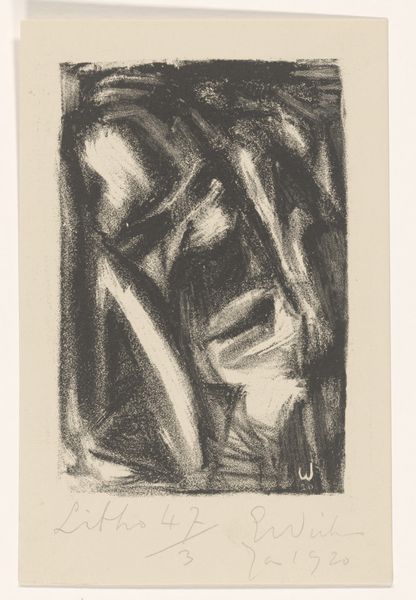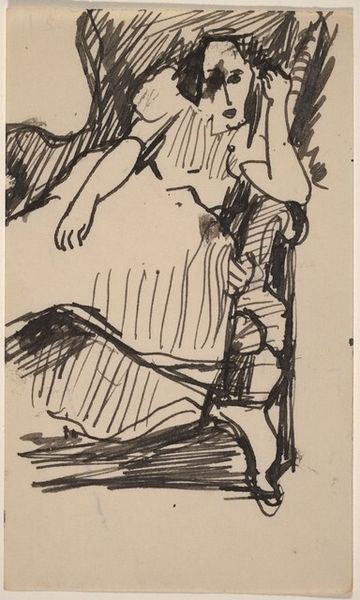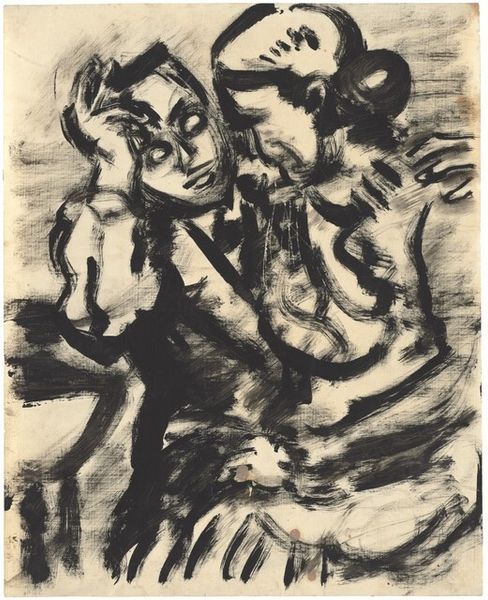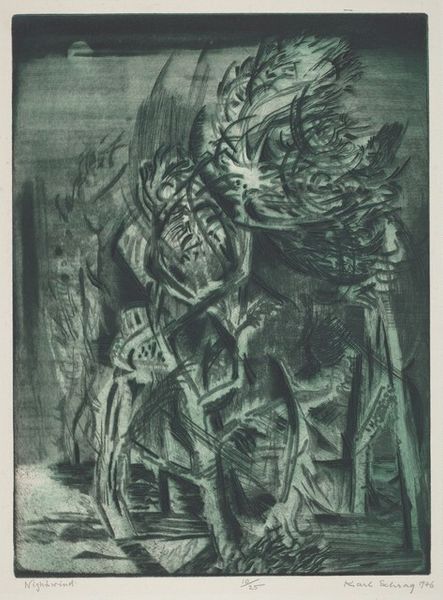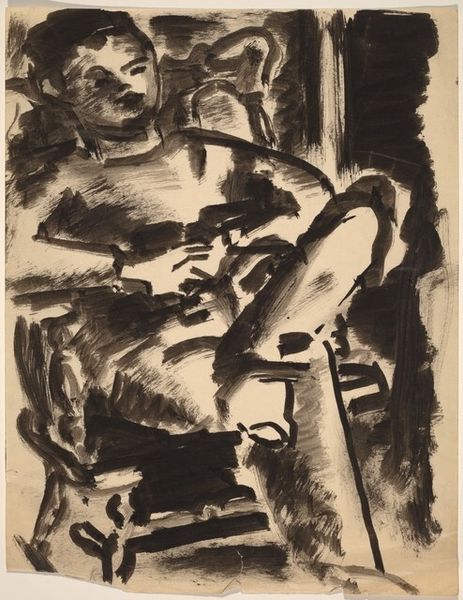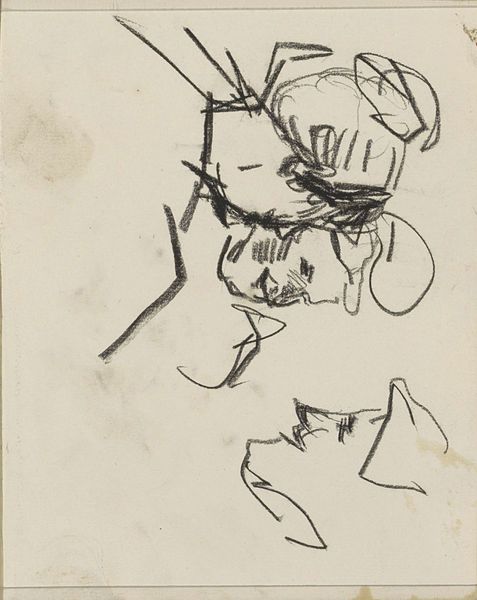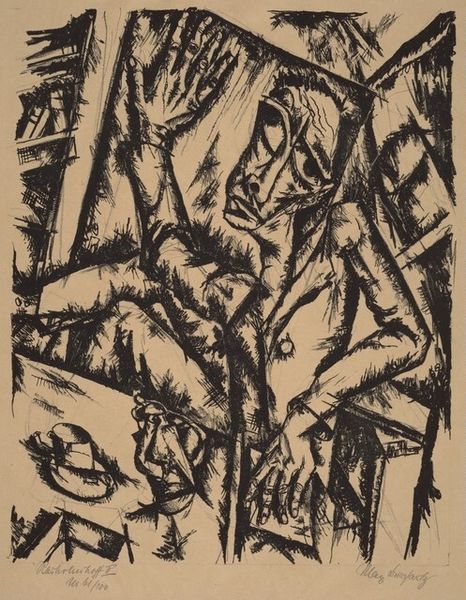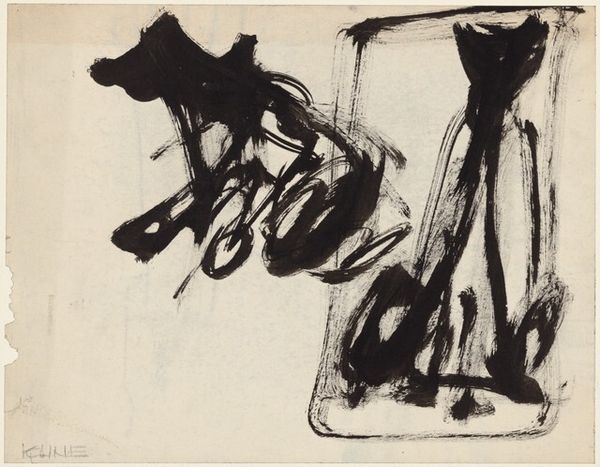
drawing, gestural-painting, ink
#
portrait
#
abstract-expressionism
#
drawing
#
ink drawing
#
self-portrait
#
pen sketch
#
form
#
gestural-painting
#
ink
#
abstraction
#
line
#
portrait drawing
#
modernism
#
monochrome
Dimensions: sheet: 25.08 × 22.54 cm (9 7/8 × 8 7/8 in.)
Copyright: National Gallery of Art: CC0 1.0
Curator: We're standing before Franz Kline's "Self-Portrait" from around 1940, an ink drawing that hints at the artist's interior world. Editor: Wow, it hits you, doesn't it? Raw energy. Feels almost violent, yet intensely personal. Like a soul turned inside out. Curator: Kline was deeply influenced by the sociopolitical turmoil of his time, particularly the rise of fascism and the looming war. His abstract expressionism became a way to express the anxieties of a world on edge, reflecting the fractured identities that war and displacement created. This self-portrait, with its bold strokes and obscured features, suggests that breaking down of identity. Editor: Fractured is the word. It’s like he’s building up a face and tearing it apart at the same time. Is he wrestling with something, some inner demon? The harsh black ink almost smothers the paper. It’s beautifully disturbing. Curator: Art historians see in this work, and others from this period, Kline's engagement with existentialist thought. The individual confronting an absurd, meaningless world. The act of creating these bold, yet ultimately abstract, representations was itself a kind of assertion of agency. Editor: Absolutely, it feels like a scream bottled up then released in one go. It's not pretty, it’s real. Does it feel vulnerable, or powerful? Both? Like, "here's me, exposed", but "try and make sense of me." Curator: Considering his later works, it's tempting to see in this piece an early grappling with the relationship between representation and abstraction, where recognizable forms break down and are reconstructed into powerful expressions of the inner self. Editor: It’s a fantastic reminder that even the boldest brushstrokes can begin with a quiet, maybe tortured, self-reflection. And those stark blacks hide a universe of emotional color. It’s really powerful to think of Kline’s future gestural abstractions having roots here. Curator: Absolutely, a crucial work for understanding the development of Kline's abstract language and his engagement with the anxieties of his era.
Comments
No comments
Be the first to comment and join the conversation on the ultimate creative platform.


